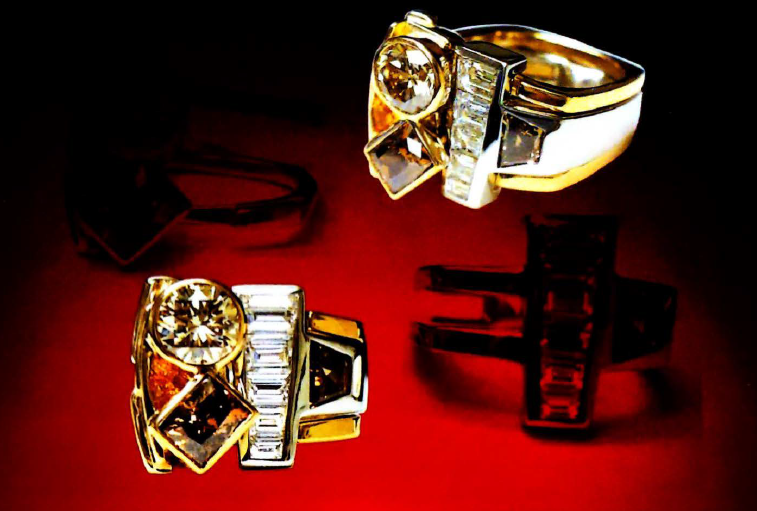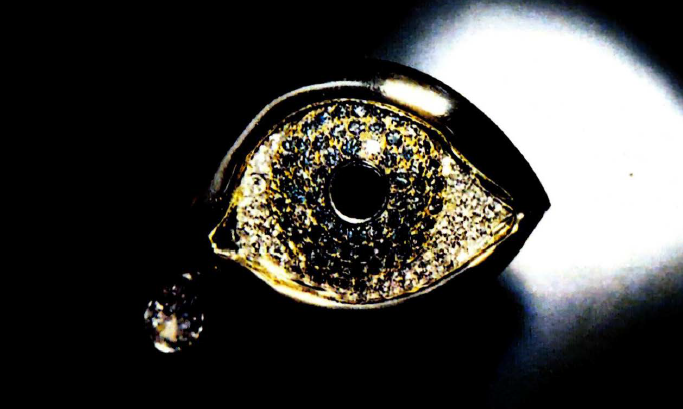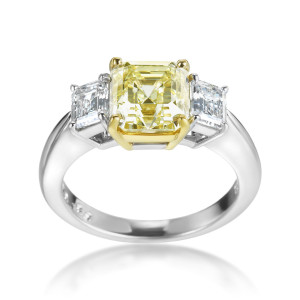Color grades are not as objective as people would like them to be. Even when the grader is someone as highly respected as the GIA, the color grade can be questioned. Russell Shor, senior editor of the JCK (Jewelers' Circular Keystone magazine), pointed out in their September 1987 issue that sometimes the grades of diamonds change when they are sent back to the GIA for re-examination. In 1995, Shor did a study of five diamonds which JCK sent to three major US gem labs. Only one of the diamonds received the same color and clarity grade from all three labs. For three of the stones, there was only a difference of one color and/or clarity grade, but for another, the difference was two clarity grades.
Usually grading differences involve borderline cases, and a change of more than one color or clarity grade is rare. However, the fact that no gem trade lab in the world will guarantee their grades or accept liability for their grading errors is a good indication that gemstone grading is subjective. Color measunng mstruments exist, but normally grading has to be done by people because how they perceive the color is what's important. Some of the problems that make it so difficult for people to grade color objectively are:
♦ A color grade represents a range of color not an exact color. Therefore a G color can be almost an For almost an H, and a G- and an H + can look about the same.
♦ The size of master stones (color comparison diamonds) is usually much smaller than the stone being graded. Slight nuances of color are harder to detect in small stones than in large ones, so comparing stones of different sizes can be misleading.
♦ The proportions of master stones may be different than the stone being graded, creating differences in color perception.
♦ The shape and cutting style of master stones may be different from the diamond being graded. It's not easy to compare the color of an emerald-cut to that of a round brilliant master stone.
♦ Sometimes flaws in a diamond can affect the way color is perceived during grading.
♦ Sometimes a diamond is color-zoned, meaning it has two grades of color. A choice or average has to be made between the two colors.
In spite of the complexity of grading diamonds, professionals still often agree on color grades. You should, however, expect buyers and sellers to have strong disagreements, particularly when the color lies between two grades. Thousands of dollars can be at stake.
Does the lack of objectivity mean that color grades are worthless? Of course not. Thanks to the establishment of international color grading systems, it's easier now to do comparison shopping. You can discuss minute nuances of color and negotiate purchases with people thousands of miles away. However, when comparing prices, keep in mind that some sellers intentionally inflate color grades in order to make their diamonds appear to be a better buy than Qiose of their competitors. Unfortunately, it's hard for lay people to tell when color grades have been misrepresented.
That's why it's important to deal with trustworthy jewelers. For major purchases, it's advisable to get a grading report from a respected gem laboratory. Gemological laboratories are aware of the limitations of diamond grading, so they normally have more than one person examine each diamond. You should be aware, too, of the limitations.
If a jeweler tells you a stone is a G color and a gem lab calls it an H color, you shouldn't assume that the jeweler is incompetent or dishonest. If, however, a jeweler calls an unmounted K color diamond a G color, you would probably be better off doing business with another jeweler. An awareness of the limitations can also help you realize that some jewelers' prices may appear to be higher than other jewelers' when, in fact, they might be lower due to stricter grading. This is one reason why many jewelers don't like to quote prices over the phone. If they are strict graders, they know that their prices will be unfairly compared to other stores that overgrade their stone.
When you get a diamond back from an appraiser or gem lab, keep in mind that color grading is subjective. The report or certificate is not necessarily the last word. It is at best an independent, expert opinion.
 |
|
Figure 1 - Light and dark brown diamonds, colorless diamonds and an orange sapphire in an interlocking platinum and 18K gold wedding ring set, which is shown in different views. Artist and designer, Eve J. Alfille, created this distinctive ring set to look like a dump truck for a client in the trucking business.
|
 |
| Figure 2 - Tantalizing jeweled eye. The white of the eye is set with white diamonds, the iris with blue diamonds and the pupil with a black diamond. A 1.05 carat pear-shaped D flawless diamond forms the teardrop. This ingenious piece was designed and crafted by Sidney Mobell in platinum and 18K yellow gold. |


















































